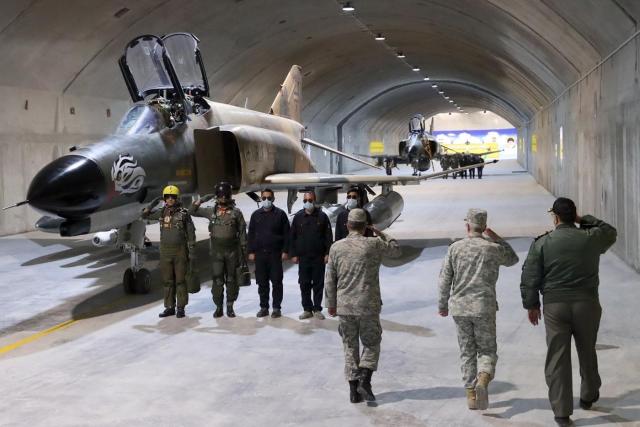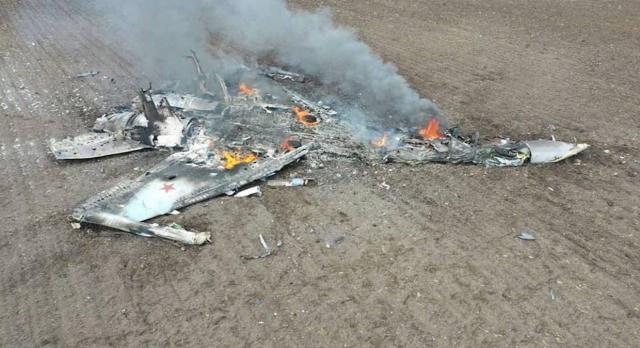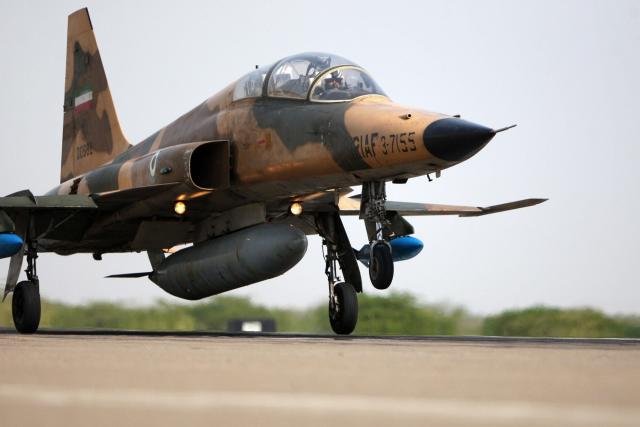

In “The Aging Air Force of Iran in a Regional War,” we explore the challenges faced by Iran’s air force as it confronts the realities of a regional war. While the article acknowledges the lack of new Russian jets in Iran’s arsenal, it suggests that the country may still hold an advantage due to the familiarity of its pilots with the home terrain. Although the article does not offer further analysis or delve deeper into the topic, it sheds light on the potential impact of an aging air force in a complex geopolitical context.
▶ [Kucoin] Transaction fee 0% discount CODE◀
Iran’s Aging Air Force
Iran’s air force, like many others around the world, is facing the challenge of aging aircraft and inadequate resources. This article will explore the impact of these factors on Iran’s air force capabilities and the potential consequences in a regional war scenario. We will also examine the role of fighter jets, ground attack aircraft, air defense systems, transport and support aircraft, unmanned aerial vehicles (UAVs), training infrastructure, and maintenance and upgrades in shaping Iran’s air force capabilities.
Lack of New Russian Jets
One of the key challenges Iran’s air force is facing is the lack of new Russian jets. Russian aircraft suppliers have been the primary source of fighter aircraft for Iran’s air force. However, due to international sanctions and political tensions, Iran has been unable to acquire new Russian jets to modernize its fleet. This lack of access to new fighter jets has limited Iran’s operational capabilities and put additional pressure on its aging aircraft.
Obsolete Aircrafts
Iran’s air force currently operates a fleet of largely obsolete aircraft, including various models of MiG and F-5 fighter jets. These aircrafts were acquired several decades ago and have been in service for a long time. The lack of new aircraft replacements means that Iran’s air force is relying on aging platforms that may suffer from decreased effectiveness and efficiency. The technological advancements in modern warfare have rendered these aircrafts outdated and less capable of meeting the demands of a regional conflict.
Inadequate Maintenance and Resources
Another significant challenge for Iran’s air force is the lack of adequate maintenance and resources. With limited access to spare parts and technical expertise, maintaining and upgrading aging aircraft becomes increasingly difficult. The lack of resources hampers efforts to address the wear and tear of these aircraft, leading to decreased operational readiness and increased risks. Without proper maintenance and resources, Iran’s ability to deploy and sustain its air force in a regional war scenario could be seriously compromised.
The Regional War Scenario
Challenges in a Regional Conflict
In a regional conflict, Iran’s air force would face numerous challenges. The lack of access to new fighter jets and the reliance on obsolete aircraft would put Iran at a disadvantage against adversaries with more advanced and capable air forces. Additionally, the limited reach and operational capability of its aging fleet could restrict Iran’s ability to project power beyond its immediate vicinity. The potentially hostile airspaces in a regional conflict would test Iran’s air force in terms of its ability to carry out effective strikes, conduct reconnaissance, and defend its airspace.
Importance of Air Power
Air power plays a crucial role in modern warfare, enabling a wide range of missions such as air superiority, ground attack, reconnaissance, and airlift operations. The ability to control the skies and deny the enemy’s airspace is essential for gaining an advantage in any conflict. Without a capable and modern air force, Iran may struggle to achieve and maintain air superiority, weakening its overall military posture.
Iran’s Home-Field Advantage
Despite the challenges mentioned earlier, Iran possesses a home-field advantage that could partially offset some of the limitations of its aging air force. Familiarity with the local terrain, weather conditions, and operational environments gives Iran an understanding of the unique challenges it may face. This knowledge can be utilized to optimize its aircraft performance and operational strategies. Additionally, Iran’s proximity to potential conflict zones allows for shorter response times and reduced logistical challenges compared to foreign forces deployed from distant locations.
Geographical Factors
Iran’s geographical location presents both advantages and challenges in a regional conflict. On one hand, its vast size and varied terrain provide ample opportunities for concealment and defensive positions. Mountains, deserts, and rugged terrain can complicate enemy air operations and limit their access to strategic targets. On the other hand, the vast borders expose Iran to potential airspace violations and incursions. Effective air defense systems and strategic positioning of air assets become critical in protecting the country’s airspace and deterring potential aggressors.
▶ [Kucoin] Transaction fee 0% discount CODE◀
Potential Consequences
Limited Reach and Operational Capability
The limitations of Iran’s aging air force can result in a limited operational reach and capability in a regional conflict. With obsolete aircraft and a lack of modern fighter jets, Iran’s ability to project power beyond its immediate borders may be significantly constrained. Limited aerial reach could make it challenging to carry out long-range strikes, provide air support to ground forces operating in distant areas, or ensure effective reconnaissance deep into enemy territory. This can diminish Iran’s ability to influence and control the outcome of the conflict.
Decreased Effectiveness and Efficiency
The outdated technology and limited capabilities of Iran’s aging aircraft can lead to decreased effectiveness and efficiency in combat operations. Older aircraft may lack advanced avionics, radar systems, weapon systems, and other modern technologies that are critical for successful military engagements. This can result in lower accuracy, reduced situational awareness, and decreased overall combat effectiveness. The inefficiency of older aircraft in terms of fuel consumption, maintenance requirements, and mission profiles can further exacerbate these challenges.
Higher Operational Risks and Vulnerabilities
The use of aging aircraft in a regional war scenario poses higher operational risks and vulnerabilities for Iran’s air force. Older aircraft are more prone to mechanical failures, malfunctions, and accidents due to wear and tear. The limited availability of spare parts and technical expertise makes it more challenging to address these issues promptly. The increased risks associated with operating older aircraft can put both the pilots and the mission at risk, decreasing the overall reliability and sustainability of Iran’s air force during the conflict.
Role of Fighter Jets
Importance in Air Superiority
Fighter jets play a critical role in achieving and maintaining air superiority, which is essential for gaining a tactical advantage in a regional conflict. These agile and versatile aircraft are designed to engage and eliminate enemy aircraft, protect friendly forces from aerial threats, and gain control of the airspace. Fighter jets equipped with advanced avionics, radar systems, and weapon capabilities allow for effective air-to-air engagements, interception of hostile aircraft, and the destruction of ground targets.
Iran’s Current Fighter Jet Fleet
Iran’s current fighter jet fleet consists primarily of older models of MiG and F-5 aircraft. These aircraft were procured from various sources in the past and have been in service for decades. While they may still possess certain combat capabilities, their limitations compared to modern fighter jets are apparent. The absence of new Russian jets due to sanctions and political tensions has hindered Iran’s ability to upgrade and enhance its fighter jet fleet effectively.
Challenges and Limitations
Iran’s aging fighter jet fleet faces several challenges and limitations. The lack of modern avionics and weapon systems hampers their ability to compete with adversaries equipped with more advanced aircraft. The limited range of older fighter jets can restrict their operational capabilities, especially when faced with longer distances or operating in hostile airspace. Moreover, the lower survivability and stealth capabilities of these aircraft expose them to increased vulnerability and higher risks during combat engagements.
Ground Attack Aircraft
Significance in Ground Operations
Ground attack aircraft play a crucial role in supporting ground operations by delivering precision strikes against enemy targets, providing close air support to friendly forces, and conducting reconnaissance missions. These aircraft are designed to operate effectively in complex and contested environments, utilizing advanced targeting systems, weapon systems, and survivability features. The ability to accurately hit enemy positions and disrupt their movements is critical in gaining tactical advantages on the ground.
Iran’s Ground Attack Aircrafts
Iran’s ground attack aircraft fleet includes various models, such as the Su-24, F-4, and domestically produced Saegheh. These aircraft have been modified and upgraded over the years to enhance their ground attack capabilities. While they may still be able to deliver conventional weapons against ground targets, the absence of more modern and advanced platforms limits Iran’s ability to utilize cutting-edge technologies and tactics employed by more sophisticated air forces.
Sustaining Air to Ground Capabilities
The sustainability of Iran’s air-to-ground capabilities may be a challenge due to the limitations of the aging ground attack aircraft fleet. Maintenance requirements, availability of spare parts, and the overall reliability of older aircraft can affect the readiness and availability of these platforms. Without proper maintenance and upgrades, sustaining effective air-to-ground capabilities throughout a prolonged regional conflict can become increasingly difficult, potentially impacting the outcome of ground operations and overall mission success.
Air Defense Systems
Crucial Role in Defense
Air defense systems play a crucial role in protecting the airspace of a country and denying the enemy’s ability to operate freely. These systems are designed to detect, track, and engage hostile aircraft, missiles, and drones. Robust and effective air defense capabilities act as a deterrent to potential aggressors, enhance the survivability of friendly forces, and protect critical infrastructure and strategic targets.
Iranian Air Defense Systems
Iran has invested in developing and acquiring various air defense systems to protect its airspace. The country possesses a combination of domestically produced systems, such as the Bavar-373 and Khordad-3, as well as imported systems, including the Russian-made S-300. While these systems provide a level of defense against potential threats, it is crucial to consider their effectiveness against modern aerial threats, such as stealth aircraft, advanced cruise missiles, and unmanned aerial systems.
Effectiveness against Modern Threats
The effectiveness of Iran’s air defense systems against modern threats remains a subject of debate and speculation. Modern warfare has witnessed the advancement of stealth technology, electronic warfare capabilities, and precision-guided weapons, challenging traditional air defense systems. The ability of Iran’s air defense systems to effectively detect, track, and engage these advanced threats can significantly impact their overall effectiveness. Continuous investment in research, development, and integration of advanced air defense technologies becomes critical to keep pace with evolving threats.
Transport and Support Aircraft
Critical Logistics Backbone
Transport and support aircraft form the critical logistics backbone of any air force, enabling the rapid movement of personnel, equipment, and supplies. These aircraft provide essential airlift capabilities, conduct aerial refueling, and support airborne command and control functions. The ability to sustain and reinforce ground forces, evacuate casualties, and maintain situational awareness relies heavily on a reliable and capable transport and support aircraft fleet.
Iran’s Transport and Support Aircraft Fleet
Iran’s transport and support aircraft fleet consists of various models, including the C-130 Hercules, Boeing 707, and domestically produced aircraft like the HESA IrAn-140. These platforms have been in service for several years and have supported Iran’s military operations and humanitarian activities. However, they too face challenges such as limited range, payload capacity, and outdated systems which can impact their ability to meet the demands of a regional conflict.
Challenges in Strategic Mobility
The challenges of strategic mobility could affect Iran’s ability to rapidly deploy and sustain its forces in a regional war scenario. The limited range and capacity of Iran’s transport aircraft fleet may restrict the speed and scale of force projection. Moreover, the reliance on outdated platforms can introduce vulnerabilities and risks in airlift operations. Addressing these challenges through investments in modern transport and support aircraft and optimizing strategic mobility capabilities becomes crucial for enhancing the overall effectiveness of Iran’s air force.
Unmanned Aerial Vehicles (UAVs)
Growing Role in Modern Warfare
Unmanned aerial vehicles (UAVs), commonly known as drones, have assumed a growing role in modern warfare due to their versatility, persistence, and cost-effectiveness. These remotely piloted or autonomously operated aircraft can be employed for various missions, including reconnaissance, surveillance, target acquisition, and even offensive strikes. The ability to gather real-time intelligence, monitor enemy activities, and strike targets from a safe distance has revolutionized the conduct of military operations.
Iran’s UAV Capabilities
Iran has made significant advancements in its UAV capabilities and has showcased various domestically developed and produced UAVs. These include systems like the Shahed-129, Ababil, and the armed Karar UAV. Iran has utilized these UAVs in operational deployments, such as in Syria, for intelligence-gathering missions and precision strikes against hostile targets. While Iran’s UAV capabilities are growing, the absence of more advanced and stealthy platforms limits their ability to operate in contested airspace and against technologically superior adversaries.
Strategic Utilization and Limitations
The strategic utilization of UAVs could provide Iran with valuable intelligence, surveillance, and reconnaissance capabilities in a regional war scenario. This would aid in target identification, tracking enemy movements, and enhancing situational awareness. However, the limitations of Iran’s UAV capabilities, such as shorter endurance, limited payload capacity, and vulnerability to electronic warfare, can impact their effectiveness in extended operations. Continued investment in research and development to evolve UAV technologies can further enhance their contribution to Iran’s air force capabilities.
Training Infrastructure and Pilot Experience
Importance of Training Facilities
Training facilities play a vital role in developing and maintaining pilot proficiency and operational readiness. These facilities provide realistic training environments, simulators, and instructional resources to enhance pilot skills, knowledge, and operational effectiveness. Frequent and rigorous training allows pilots to refine their technical skills, decision-making abilities, and tactical expertise necessary for successful operational engagements.
Iran’s Pilot Training Capabilities
Iran maintains pilot training capabilities through various training facilities, including flight schools and simulation centers. These facilities cater to the training needs of aspiring pilots and provide continuous training for existing air force personnel. Iran’s training infrastructure has evolved over the years, incorporating modern training techniques and technology to enhance pilot proficiency. However, the limitations of access to advanced training platforms and international cooperation can pose challenges in maintaining parity with more advanced air forces.
Effectiveness of Pilot Experience
The effectiveness of pilot experience depends on a combination of training, operational experience, and exposure to modern aviation technologies. Pilot experience gained through operational deployments and participation in joint exercises can provide valuable insights into real-world scenarios and enhance decision-making under stressful conditions. Continuous training, combined with actual operational experience, contributes to the development of skilled and competent pilots capable of maximizing the capabilities of aging aircraft and overcoming their limitations.
Maintenance and Upgrades
Significance of Regular Maintenance
Regular maintenance is of utmost importance to ensure the airworthiness, reliability, and safety of any aircraft fleet. Aging aircraft, in particular, require meticulous attention to address wear and tear, identify potential issues, and undertake essential repairs or modifications. Adequate maintenance ensures that the aircraft can sustain operational readiness, perform at desired levels, and minimize the risks associated with mechanical failures or malfunctions.
Iran’s Maintenance Capabilities
Iran’s maintenance capabilities play a crucial role in sustaining the airworthiness of its aging aircraft fleet. With limited access to spare parts, technical expertise, and international cooperation, maintaining and repairing aging aircraft becomes a significant challenge. Iran has invested in domestic production and reverse engineering to overcome some of these challenges, but the absence of regular upgrades and the reliance on outdated technologies can impact the effectiveness of maintenance efforts.
Challenges in Upgrading Aging Air Fleet
Upgrading an aging air fleet provides an opportunity to enhance the capabilities and extend the lifespan of existing aircraft platforms. Modern avionics, radar systems, weapon systems, and structural enhancements can significantly improve the operational performance of aging aircraft. However, the challenges associated with acquiring new technologies, compatibility issues with existing platforms, and limited resources can pose obstacles to effective upgrades. Overcoming these challenges is essential to keep the aging air fleet operationally viable and maximize its potential in a regional war scenario.
In conclusion, Iran’s aging air force faces significant challenges in a regional war scenario. The lack of new Russian jets, reliance on obsolete aircraft, and inadequate maintenance and resources limit Iran’s operational capabilities and increase risks. However, Iran’s home-field advantage and geographical factors provide some compensatory advantages. The role of fighter jets, ground attack aircraft, air defense systems, transport and support aircraft, UAVs, training infrastructure, and maintenance and upgrades are crucial in shaping Iran’s air force capabilities. While Iran’s aging air force may have limitations, strategic utilization, continuous investment, and effective training can enhance its overall effectiveness and contribution in a regional conflict.
RELATED POSTS
View all







